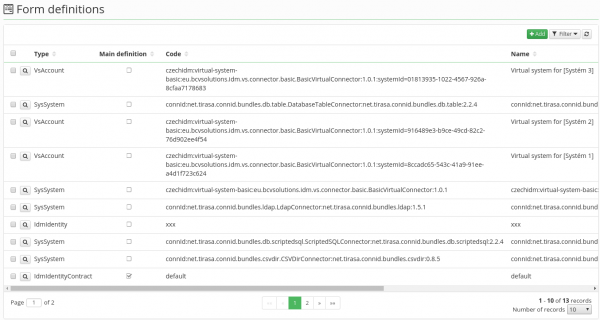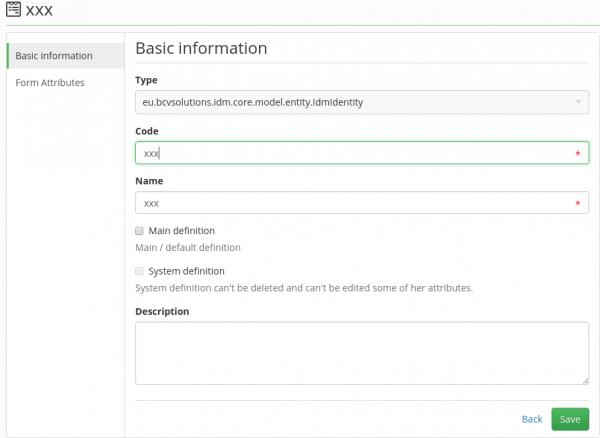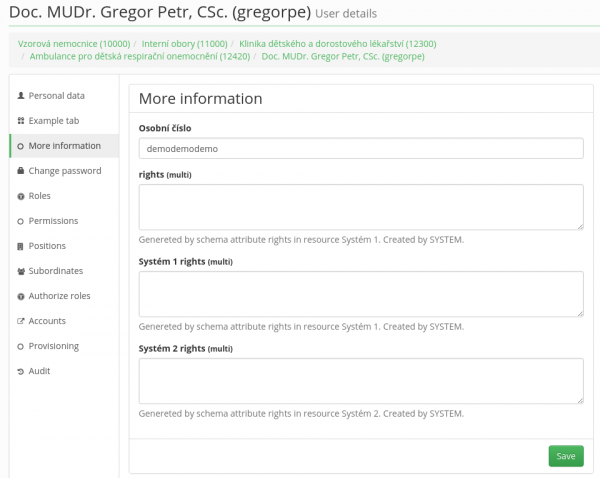Extended attributes (EAV)
Entities in CzechIdM contain a set of basic attributes which can deal with most of general situations. However, due to the fact, that the implementation needs vary, it often happens that there is not enough basic attributes. Therefore, the so-called extended attributes (EAV) can be added to important entities. CzechIdM contains an agenda where these attributes can be managed.
Attributes forms
To be able to add an attribute to an entity, a form must be set up first. The form can be imagined as a set of extended attributes of an entity. The form is aimed at one specific entity, e.g. Identity, Role, Tree node. The form management can be found in Settings → Form definitions, where forms can be managed. There can be more forms for one entity, and thus the attributes can be logically divided according to them.
The form is identified by its name, which must be unique for each entity.
The editing of the form is done by clicking on the detail of the given form – magnifying glass symbol next to the type. Or add a new form using the green button Add. EAV can have the following options:
A new EAV for a form
Form attributes can be found in Settings → Form definitions → Form detail → Form attributes. A new attribute can be defined by clicking on Add button.
Every attribute has following options:
- Code – Attribute name, must be unique within the whole IdM
- Name – the item name displayed in the GUI. Must be unique within the form.
- Attribute type – denotes the type of data saved in the attribute value. The most commonly used is “Text”.
- Placeholder – the filled-in text will be displayed in the entity attribute value until the editor enters a new value, i.e. it is a clue for what to fill in the item. For example, for the entity attribute “Personal number” a suitable Placeholder would be “Employee’s personal number, do not fill for external workers”.
- Order – defines the order of attributes in the form. It influences the displaying of the attribute list in the entity detail. Using this option, the attributes can be conveniently clustered within the form, for example.
- Default value – When created, the entity acquires an extended attribute with this value. If the value of the attribute is changed in the future, the default value will be replaced.
- Description – an option item description
- Required – the attribute must be filled in by every entity using the form.
- Hidden – the attribute is kept in an encrypted storage and the attribute value is not displayed in the GUI. The value is replaced by substitute characters.
- Multi-valued – the attribute can have more values at the same time. For example, „mobile = 723723723, 723777777“
- System attribute – a ReadOnly box. It marks attributes which are filled in by the system or copied from another agenda. These are, for example, attributes of the connected system, which are set in the systems agenda or returned by the system connector.



